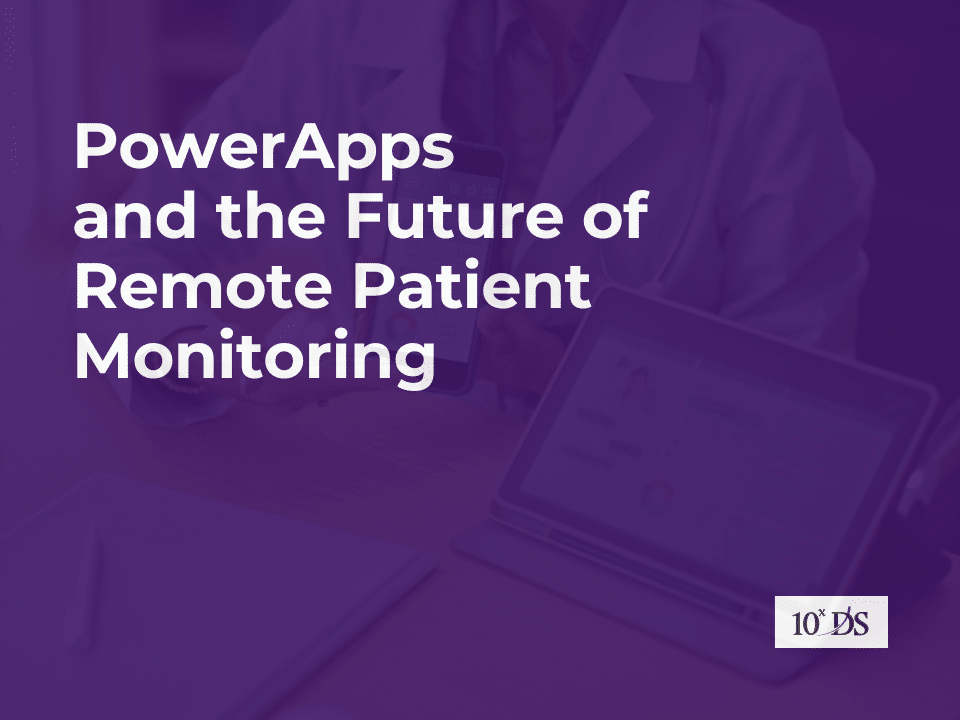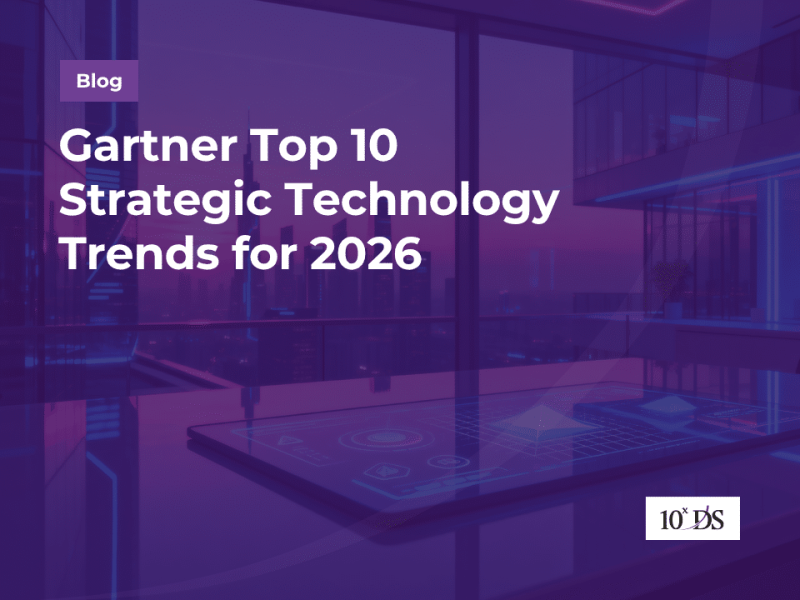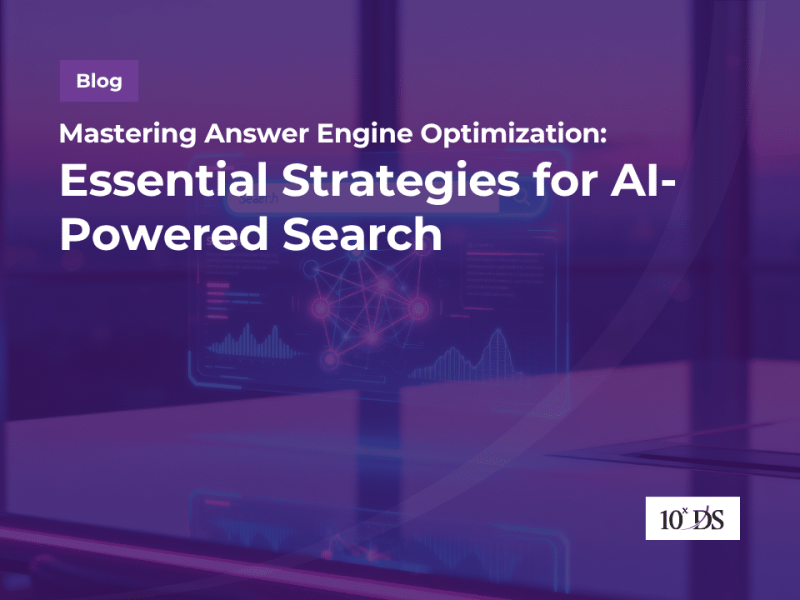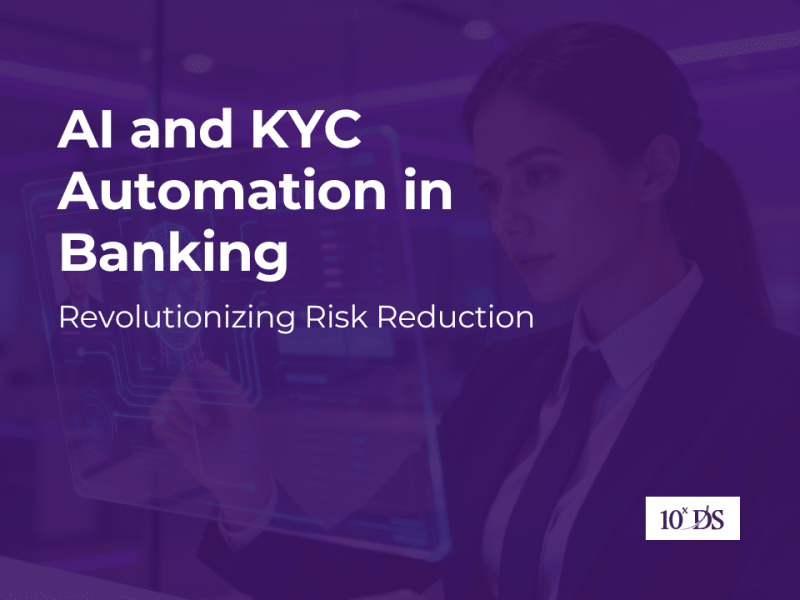
PowerApps and the Future of Remote Patient Monitoring
Imagine a patient with a chronic condition experiencing alarming symptoms in the middle of the night. Instead of waiting hours for a hospital visit, their wearable device instantly transmits real-time health data to their doctor, triggering an automated alert through a remote monitoring system. The physician, accessing the patient’s vitals via a secure mobile app, intervenes immediately adjusting medications, scheduling a teleconsultation, or dispatching emergency care if needed.
This level of smart, proactive healthcare is no longer a distant vision but a reality, thanks to Remote Patient Monitoring (RPM) solutions. The healthcare industry is undergoing a profound digital transformation, driven by the increasing demand for real-time patient monitoring, enhanced data accessibility, and improved patient engagement. With RPM, healthcare providers can now extend their services beyond hospital walls, improving patient outcomes while reducing operational costs.
At the heart of this transformation is Microsoft PowerApps, a low-code development platform that enables healthcare organizations to build customized RPM applications tailored to their specific needs. Unlike traditional IT solutions that require extensive coding and infrastructure investments, PowerApps offers a rapid, scalable, and cost-effective alternative. By seamlessly integrating with IoT-enabled medical devices, Electronic Health Records (EHRs), Power BI a tool that turns complex healthcare data into easy-to-understand insights and cloud-based analytics. PowerApps empowers healthcare providers to monitor patients in real time, automate workflows, and optimize decision-making, ensuring timely interventions and better patient care.
Why Power Apps in Remote patient Monitoring
PowerApps stands out as a preferred solution for Remote Patient Monitoring (RPM) due to its low-code environment, seamless integrations, cost-effectiveness, and rapid deployment capabilities. While traditional healthcare IT solutions often require significant resources to develop and maintain, PowerApps allows healthcare providers to quickly design, implement, and customize RPM applications without extensive coding expertise.
Key Advantages of PowerApps in RPM:
- Low-Code, Rapid Development – PowerApps enables healthcare organizations to create and modify RPM applications quickly, reducing development time compared to custom-built solutions and accelerating time-to-market.
- Seamless Integration with IoT & EHR Systems – PowerApps connects effortlessly with IoT-enabled medical devices, EHRs, Microsoft Dataverse, Power BI, and third-party APIs, ensuring smooth data flow for real-time patient monitoring.
- Automated Workflows & Alerts – With Power Automate, healthcare providers can set up automated notifications for critical health changes, schedule follow-ups, and integrate AI-driven analytics to support early intervention and proactive care.
- Scalability & Customization – Unlike rigid, off-the-shelf RPM solutions, PowerApps offers flexible workflows, custom dashboards, and role-based access control, making it adaptable for small clinics and large hospitals alike.
- Cost-Effective & Cloud-Based – Leveraging Microsoft Azure’s secure, cloud-based environment, PowerApps eliminates the need for heavy infrastructure investments, reducing IT costs while ensuring compliance with regulations like HIPAA and GDPR.
- Enhanced User Experience – With its intuitive UI and mobile-friendly design, PowerApps enables both patients and healthcare providers to access real-time health data on any device, improving engagement and adherence to care plans.
Let’s delve into the practical applications of PowerApps in remote healthcare monitoring, exploring its impact on real-time tracking, data management, patient engagement, compliance, and overall operational efficiency through various use cases.
1. Enhanced Real-Time Monitoring with IoT Integration
A major challenge in remote healthcare is ensuring continuous patient monitoring and timely intervention in case of abnormalities. PowerApps enables seamless integration with Internet of Things (IoT) medical devices, allowing real-time tracking of patients’ health metrics, such as: Heart rate, Blood pressure, Oxygen saturation, Blood glucose levels, Body temperature, Electrocardiogram (ECG) readings
By connecting PowerApps to wearable devices and smart sensors, healthcare providers can monitor patients remotely and receive instant alerts in case of abnormal readings. This enables early diagnosis and intervention, reducing hospital re-admissions and improving patient outcomes.
For example, patients with chronic conditions like diabetes or hypertension can use a PowerApps-based solution to track their vitals, and physicians can access this data in real-time, making informed treatment decisions without requiring in-person visits.
2. Streamlined Data Collection and Analysis
One of the most significant benefits of PowerApps is its ability to streamline data collection and integration across different healthcare systems. Traditionally, patient data is scattered across multiple sources, making it difficult to track and analyse trends. PowerApps resolves this issue by:
- Integrating with Electronic Health Records (EHRs) to pull patient history and medical records.
- Capturing data from IoT devices and mobile applications for real-time patient tracking.
- Storing structured patient information in Microsoft Dataverse for easy accessibility and processing.
- Using Power Automate to trigger workflows for alerts, reminders, and follow-ups based on data insights.
Moreover, advanced analytics powered by Power BI can be integrated with PowerApps to generate visual reports and dashboards. Healthcare professionals can analyse trends in patient health, predict potential risks, and personalize treatment plans accordingly.
For instance, a hospital using PowerApps for post-surgical monitoring can analyse patient recovery trends and adjust follow-up schedules based on their condition.
3. Improved Patient Engagement and Virtual Care
The success of remote healthcare largely depends on patient engagement and adherence to treatment plans. PowerApps enhances patient engagement by providing custom mobile applications for:
- Virtual consultations with doctors and nurses.
- Appointment scheduling and reminders to ensure adherence to treatment plans.
- Access to personal health records for better self-management.
- Secure messaging for real-time communication with healthcare professionals.
- Medication tracking and alerts to remind patients to take prescribed drugs.
By using a PowerApps-based patient portal, individuals can actively participate in their own healthcare journey, resulting in better treatment adherence and higher satisfaction levels. This is particularly useful for elderly patients or those with mobility issues, as they can receive quality care from the comfort of their homes.
4. Compliance with Healthcare Standards and Data Security
Handling sensitive patient data requires strict adherence to healthcare regulations such as:
- HIPAA (Health Insurance Portability and Accountability Act) in the U.S.
- GDPR (General Data Protection Regulation) in the EU
- HL7 FHIR (Fast Healthcare Interoperability Resources) for data exchange
PowerApps is designed to ensure compliance with these standards by:
- Implementing Role-Based Access Control (RBAC) to restrict unauthorized data access.
- Encrypting sensitive patient data both in transit and at rest.
- Providing audit trails for tracking data access and modifications.
- Ensuring seamless integration with compliant cloud solutions like Microsoft Azure for secure data storage.
By maintaining high standards of data security and privacy, PowerApps allows healthcare organizations to build trust with patients and comply with regulatory requirements seamlessly.
5. Operational Efficiency and Cost Reduction
Remote patient monitoring is not only about improving care—it also helps optimize healthcare operations and reduce costs. PowerApps contributes to cost savings in several ways:
- Reduces hospital readmissions by enabling early interventions.
- Minimizes paperwork and administrative workload with digital forms and automated workflows.
- Enhances resource allocation by providing real-time visibility into patient conditions.
- Cuts IT development costs by offering a low-code/no-code platform for app development.
For example, a clinic that uses PowerApps for managing home-based patient monitoring can reduce the need for frequent physical check-ups, allowing doctors to focus on critical cases while still providing continuous care to remote patients.
Real-World Use Cases of PowerApps in Healthcare
Several healthcare institutions have already adopted PowerApps for remote monitoring and other medical applications. Here are a few real-world use cases:
- Chronic Disease Management – Patients with conditions like diabetes, asthma, or heart disease use PowerApps-integrated IoT devices to track their vitals, allowing doctors to adjust treatment plans accordingly.
- Post-Surgical Recovery Monitoring – Hospitals use PowerApps to monitor patients after surgery, reducing the need for frequent visits and ensuring smooth recovery.
- Telemedicine Platforms – Healthcare providers use PowerApps to develop virtual consultation applications that connect patients with doctors remotely.
- Quarantined Patient Tracking – Governments and hospitals used PowerApps to track quarantined patients, monitor symptoms, and ensure timely intervention during the pandemic.
- Elderly and Palliative Care – Caregivers use PowerApps-based applications to track the health of senior citizens, ensuring they receive timely medical attention.
The Future of PowerApps in Healthcare
With continuous advancements in artificial intelligence (AI), machine learning (ML), and IoT, the future of PowerApps in healthcare looks promising. Potential developments include AI-driven predictive analytics, where machine learning models integrated with PowerApps could predict potential health risks based on patient data. Voice-assisted health apps, powered by Microsoft Azure AI, could enhance patient interactions, making healthcare more accessible. Additionally, PowerApps could expand integration with advanced wearable health monitoring devices, improving patient tracking and real-time health insights. Blockchain technology could also play a crucial role in secure data sharing, enabling decentralized and tamper-proof health records through PowerApps and Azure Blockchain solutions. As healthcare organizations continue embracing digital transformation, PowerApps will remain a key enabler of accessible, personalized, and remote healthcare solutions.
Conclusion
Choosing PowerApps means opting for a flexible, scalable, and future-ready solution that adapts to evolving healthcare needs. To explore its full potential and tailor it to your organization’s requirements, the experts at 10xDS are here to help. Get in touch with us today to discover how PowerApps can redefine your remote healthcare monitoring strategy and drive better patient outcomes.


